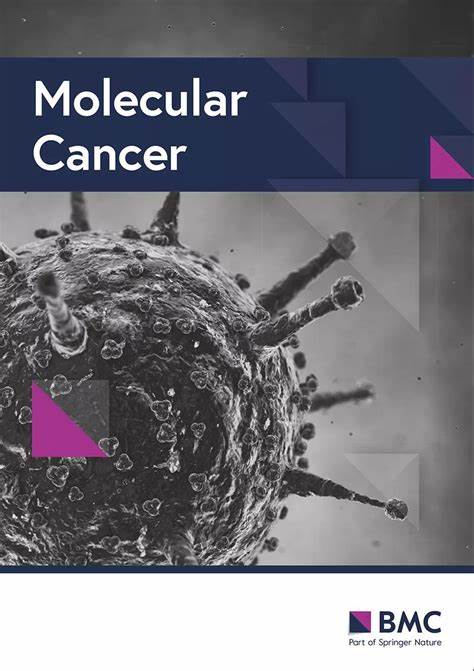Lymph node macrophage-targeted interferon alpha boosts anticancer immune responses by regulating CD169-positive phenotype of macrophages
IF 33.9
1区 医学
Q1 BIOCHEMISTRY & MOLECULAR BIOLOGY
引用次数: 0
Abstract
CD169+ macrophages in lymph nodes (LNs) activate cytotoxic T lymphocytes (CTLs), which play a crucial role in anticancer immunity, through antigen presentation and co-stimulation by CD169. Interferon alpha (IFNα) is capable of inducing the CD169+ phenotype of macrophages; however, its clinical applications have been hindered by pharmacokinetic limitations—low LN distribution and an inability to target macrophages. To overcome these issues, this study genetically fused mouse IFNα (mIFNα) with mannosylated mouse serum albumin (Man-MSA), and investigated the antitumor effects of the hybrid protein (Man-MSA-mIFNα) or its add-on effects with programmed death-ligand 1 (PD-L1) blockade. To confirm the possibility of CD169+ macrophage-mediated T cell priming, positional information about individual immune cells in LNs of cancer patients was obtained. Traits of Man-MSA-mIFNα, which was prepared using Pichia pastoris to form the high-mannose structure, were characterized by several physicochemical methods. To evaluate the lymphatic drainage of Man-MSA-mIFNα, radioiodine or Cy5-labeled Man-MSA-mIFNα was subcutaneously administered in mice, and then the radioactivity or fluorescence in LNs was analyzed. CD169-diphtheria toxin (DT) receptor (CD169-DTR) mice in which LN CD169+ macrophages can be depleted by DT injection were used to verify whether the antitumor effect of Man-MSA-mIFNα is dependent on LN CD169+ macrophages. Multiplex tissue imaging predicted close proximity of CD169+ macrophages and T cells and positive correlation between the number of CD169+ macrophages and T cells in neighborhoods in LNs of cancer patients. Physicochemical analyses showed that Man-MSA-mIFNα was formed from the fusion of the intact Man-MSA and mIFNα. Man-MSA-mIFNα efficiently induced the CD169+ phenotype of macrophages by its high LN distribution and macrophage-targeting capability, and significantly exerted antitumor activity through CD8+ T cell activation in the LNs, whereas its antitumor effects were canceled in CD169-DTR mice. Finally, combination therapy with PD-L1 blockade markedly suppressed tumor growth in MB49-bearing mice, which exhibit resistance to PD-L1 blockade monotherapy. The present study successfully designed and developed Man-MSA-mIFNα, which efficiently induces the CD169+ phenotype in LN macrophages, contributing to the antitumor immunity. The findings suggest that our novel strategy targeting CD169⁺ macrophages could be a promising immunotherapy for cancer patients who are unresponsive to immune checkpoint inhibitors.淋巴结巨噬细胞靶向干扰素α通过调节巨噬细胞cd169阳性表型增强抗癌免疫反应
淋巴结(LNs)中的CD169+巨噬细胞通过抗原呈递和CD169的共刺激激活细胞毒性T淋巴细胞(ctl), ctl在抗癌免疫中起着至关重要的作用。干扰素α (IFNα)能够诱导巨噬细胞的CD169+表型;然而,其临床应用受到药代动力学限制——低LN分布和不能靶向巨噬细胞——的阻碍。为了克服这些问题,本研究将小鼠IFNα (mIFNα)与甘露糖化小鼠血清白蛋白(Man-MSA)基因融合,并研究了杂交蛋白(Man-MSA-mIFNα)或其与程序性死亡配体1 (PD-L1)阻断的附加效应的抗肿瘤作用。为了证实CD169+巨噬细胞介导的T细胞启动的可能性,我们获得了肿瘤患者LNs中个体免疫细胞的位置信息。利用毕赤酵母制备高甘露糖结构的Man-MSA-mIFNα,并对其性状进行了理化表征。采用放射性碘或cy5标记的man - msa - mifn - α皮下注射,观察其对淋巴细胞的放射性或荧光作用。采用CD169-白喉毒素(DT)受体(CD169- dtr)小鼠,验证Man-MSA-mIFNα的抗肿瘤作用是否依赖于LN CD169+巨噬细胞。多重组织成像预测CD169+巨噬细胞和T细胞的接近性,以及肿瘤患者LNs中CD169+巨噬细胞和T细胞的数量正相关。理化分析表明,Man-MSA-mIFNα是由完整的Man-MSA与mIFNα融合而成。Man-MSA-mIFNα通过其高LN分布和巨噬细胞靶向能力有效诱导巨噬细胞CD169+表型,并通过CD8+ T细胞活化在LNs中显著发挥抗肿瘤活性,而其抗肿瘤作用在CD169- dtr小鼠中被取消。最后,PD-L1阻断联合治疗可显著抑制携带mb49的小鼠的肿瘤生长,这些小鼠对PD-L1阻断单药治疗表现出耐药性。本研究成功设计并制备了Man-MSA-mIFNα,该蛋白能有效诱导LN巨噬细胞CD169+表型,促进抗肿瘤免疫。研究结果表明,针对CD169 +巨噬细胞的新策略可能是对免疫检查点抑制剂无反应的癌症患者的一种有希望的免疫疗法。
本文章由计算机程序翻译,如有差异,请以英文原文为准。
求助全文
约1分钟内获得全文
求助全文
来源期刊

Molecular Cancer
医学-生化与分子生物学
CiteScore
54.90
自引率
2.70%
发文量
224
审稿时长
2 months
期刊介绍:
Molecular Cancer is a platform that encourages the exchange of ideas and discoveries in the field of cancer research, particularly focusing on the molecular aspects. Our goal is to facilitate discussions and provide insights into various areas of cancer and related biomedical science. We welcome articles from basic, translational, and clinical research that contribute to the advancement of understanding, prevention, diagnosis, and treatment of cancer.
The scope of topics covered in Molecular Cancer is diverse and inclusive. These include, but are not limited to, cell and tumor biology, angiogenesis, utilizing animal models, understanding metastasis, exploring cancer antigens and the immune response, investigating cellular signaling and molecular biology, examining epidemiology, genetic and molecular profiling of cancer, identifying molecular targets, studying cancer stem cells, exploring DNA damage and repair mechanisms, analyzing cell cycle regulation, investigating apoptosis, exploring molecular virology, and evaluating vaccine and antibody-based cancer therapies.
Molecular Cancer serves as an important platform for sharing exciting discoveries in cancer-related research. It offers an unparalleled opportunity to communicate information to both specialists and the general public. The online presence of Molecular Cancer enables immediate publication of accepted articles and facilitates the presentation of large datasets and supplementary information. This ensures that new research is efficiently and rapidly disseminated to the scientific community.
 求助内容:
求助内容: 应助结果提醒方式:
应助结果提醒方式:


